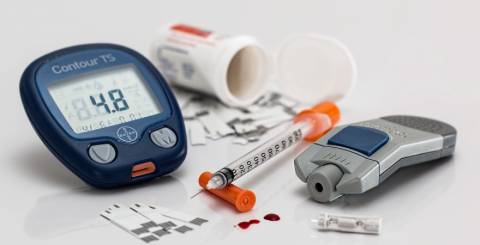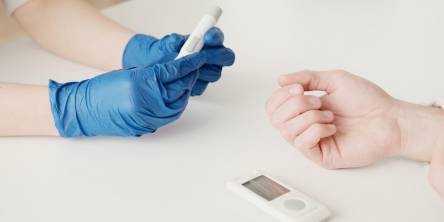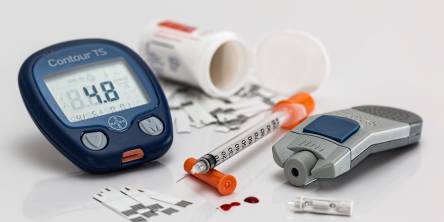Ozempic Semaglutide Pens: A Simple Guide to Better Blood Sugar Control

Managing diabetes can be challenging, but tools like Ozempic semaglutide pens make it a bit easier. Designed to improve blood sugar control, Ozempic semaglutide pens offer effective support for those with type 2 diabetes. Let’s explore what they do, how to use them, and why they’re a trusted option for blood sugar management.
What Are Ozempic Semaglutide Pens?
Ozempic semaglutide pens are prescription medication devices used to improve blood sugar levels in adults with type 2 diabetes. The pen delivers doses of semaglutide, a medication that mimics a natural hormone called GLP-1 (glucagon-like peptide-1). This hormone helps regulate blood sugar, especially after meals. Not only does it help manage blood glucose levels, but it can also assist in weight management, another key factor in diabetes control.
Semaglutide works in multiple ways. It stimulates insulin production, reduces glucose release from the liver, and helps slow down food digestion. The result? More stable blood sugar levels throughout the day.
Key Benefits of Ozempic Semaglutide Pens
-
Effective Blood Sugar Control
The primary purpose of Ozempic pens is to manage blood sugar levels. For people with type 2 diabetes, consistent use of these pens can lead to better overall glucose control, helping to reduce A1C levels, a measure of average blood sugar over three months. -
Weight Management Support
Many users experience weight loss, which can be beneficial for managing diabetes. By slowing digestion and reducing appetite, Ozempic semaglutide supports healthy weight goals without the need for constant calorie tracking or dieting. -
Cardiovascular Benefits
Studies have shown Ozempic can lower the risk of major cardiovascular events, including heart attacks. For people with diabetes, who are at a higher risk of heart disease, this benefit is a game-changer. -
Convenient Once-a-Week Dosing
Ozempic pens require only one injection per week, unlike some medications that need daily doses. This weekly dose simplifies the routine, making it easier to stay on track.
How to Use Ozempic Semaglutide Pens
-
Understanding the Pen Structure
Ozempic pens come with a dose counter, dose button, pen cap, and a new needle for each use. The dose selector allows you to set the right amount each time, guided by your healthcare provider. -
Preparing for Injection
First, wash your hands. Attach a new needle to the pen and remove the pen cap. Use an alcohol swab to clean the injection site. Common sites include the upper arm, thigh, or abdomen. -
Injecting the Medication
Set the dose selector to the prescribed amount, checking the dose counter to confirm it’s correct. Inject Ozempic into the skin by pressing the dose button. Keep the button pressed for a few seconds to ensure the full dose is delivered. When the flow check symbol appears, it’s done. -
After Injection
Dispose of the needle safely. Always check the expiration date on the pen before each use. And remember to store unused Ozempic pens in the refrigerator.
What Happens if You Miss a Dose?
If you miss a dose, don’t panic. Take the missed dose as soon as possible if it’s within five days of your regularly scheduled day. After five days, skip the missed dose and continue with the next dose as usual. Avoid taking two doses in the same day.
Potential Side Effects and Safety Considerations
While Ozempic is effective, it’s essential to know about potential side effects and risks.
-
Low Blood Sugar
Especially if taken with other diabetes medications, Ozempic may lower blood sugar to risky levels. Keep a source of sugar nearby, like juice or candy, in case symptoms appear. -
Thyroid Cancer Concerns
Ozempic has a warning for those with a personal or family history of medullary thyroid carcinoma, a rare type of thyroid cancer. Speak to your healthcare provider if you have any history of thyroid tumors or related risk factors. -
Severe Allergic Reactions
Some may experience serious allergic reactions to Ozempic. Look out for symptoms like trouble swallowing, skin rash, or severe pain. Seek medical help if these occur. -
Diabetic Retinopathy
There’s a potential link between Ozempic and worsening diabetic retinopathy. Regular eye exams are essential if you’re on this medication. -
Gallbladder Problems
Ozempic may increase the risk of gallbladder issues. Be alert for signs like severe pain in the upper stomach or shoulder area. -
Kidney Problems
Rarely, Ozempic may cause kidney problems. Drinking plenty of water and monitoring blood sugar can help avoid strain on the kidneys.
Using Ozempic Safely
-
Check for Drug Interactions
Ozempic may interact with other medications, including prescription drugs for heart disease. Consult your healthcare provider about any drugs or supplements you’re taking. -
Avoid Alcohol
Drinking alcohol can increase the risk of low blood sugar. Limit or avoid alcohol while on Ozempic for safer blood sugar management. -
Consult on Dosage and Injection Sites
Your healthcare provider will determine the maximum recommended dosage based on your needs. Rotate injection sites between the upper arm, abdomen, and thigh to reduce irritation. -
Review Insurance Coverage and Patient Assistance
Ozempic isn’t cheap. Health insurance might cover part of the cost, and a patient assistance program may be available for eligible patients. Check options to make this treatment more affordable.
Key Takeaways
Ozempic semaglutide pens simplify diabetes management by delivering doses that help control blood sugar, support weight loss, and reduce cardiovascular risks. The dose counter shows exactly what you’re taking, making it easy to use the right amount. If side effects like low blood sugar or a serious allergic reaction occur, contact your healthcare provider immediately. Regular check-ins and monitoring are essential for using Ozempic safely.
Ozempic isn’t the right fit for everyone, especially those with a personal or family history of thyroid tumors. But with a prescription from a healthcare professional and insurance coverage options, Ozempic offers an effective tool for diabetes management. For those who need help managing blood sugar levels, the convenience and benefits of Ozempic semaglutide pens are clear.
Frequently Asked Questions
How often do I use the Ozempic pen?
Use the Ozempic pen once a week, on the same day each week, following your healthcare provider's instructions.
How do I attach a needle tip to the Ozempic pen?
Twist a new needle tip onto the Ozempic pen before each injection to ensure proper dosing.
Can I reuse the needle tip on my Ozempic pen?
For safety and hygiene, always use a new needle tip with each injection.
Similar Articles
Diabetes is a chronic medical condition that affects the way your body regulates blood sugar (glucose). Glucose is an important source of energy for your body's cells, and its levels are controlled by the hormone insulin, which is produced by the pancreas.
High blood sugar level is associated with Diabetes mellitus also known as hyperglycemia as well as blood sugar level can drop also that condition is kept under hypoglycemia.
What is Fasting Insulin? How it is significant in the early detection of Diabetes? Why we are being bombarded these days about Ayurveda? Ayurveda is "Veda about herbs" It means "Ayushman bhav with knowledge of herbs, meaning thereby, a book that helps you to live longer, in a healthier style.
High Blood sugar occurs when your body doesn’t produce enough insulin or even when the body cannot use insulin well to transport sugar from the blood to cells. Although there’s no known treatment for this condition, there are a couple of things you can do which impact directly on your blood sugar levels in a positive way.
Alcohol, refined sugar, genes, decelerated metabolism, and further origins of concentrated sugar in your blood add onto glycemia and widely spread 21. century disease. Processing the sugars and starches turns uneasy; urination becomes more frequent; and your thirst after liquids abnormal - any similar sign resembles a silent language, such as the fatigue or losing weight.
Diabetes is characterized by an increase in blood sugar levels and frequent micturition. It is a type of Vataja Prameha (passing of excess urine in quantity and frequency) known as Madhumedha (excretion of sweet urine) or Asrava or Maharoga (a Major disease affecting almost all parts of the body) in Ayurveda.
With all the information about type 2 diabetes floating on the internet, it would be tricky to find the most important information about it. Type 2 diabetes is a disease that affects millions of people worldwide.
Diabetes can lead to various serious illnesses, including itching, heart attack, blindness, nerve damage, stroke, impotence, and even amputation of a limb. Taking pills cannot always guarantee a permanent cure. Opt for safe and secure Ayurvedic treatment that provides a long-term cure without any side effects.
Nowadays, as the lifestyle of people is sedentary due to which people are more prone to various types of diseases in which diabetes is one of them.









